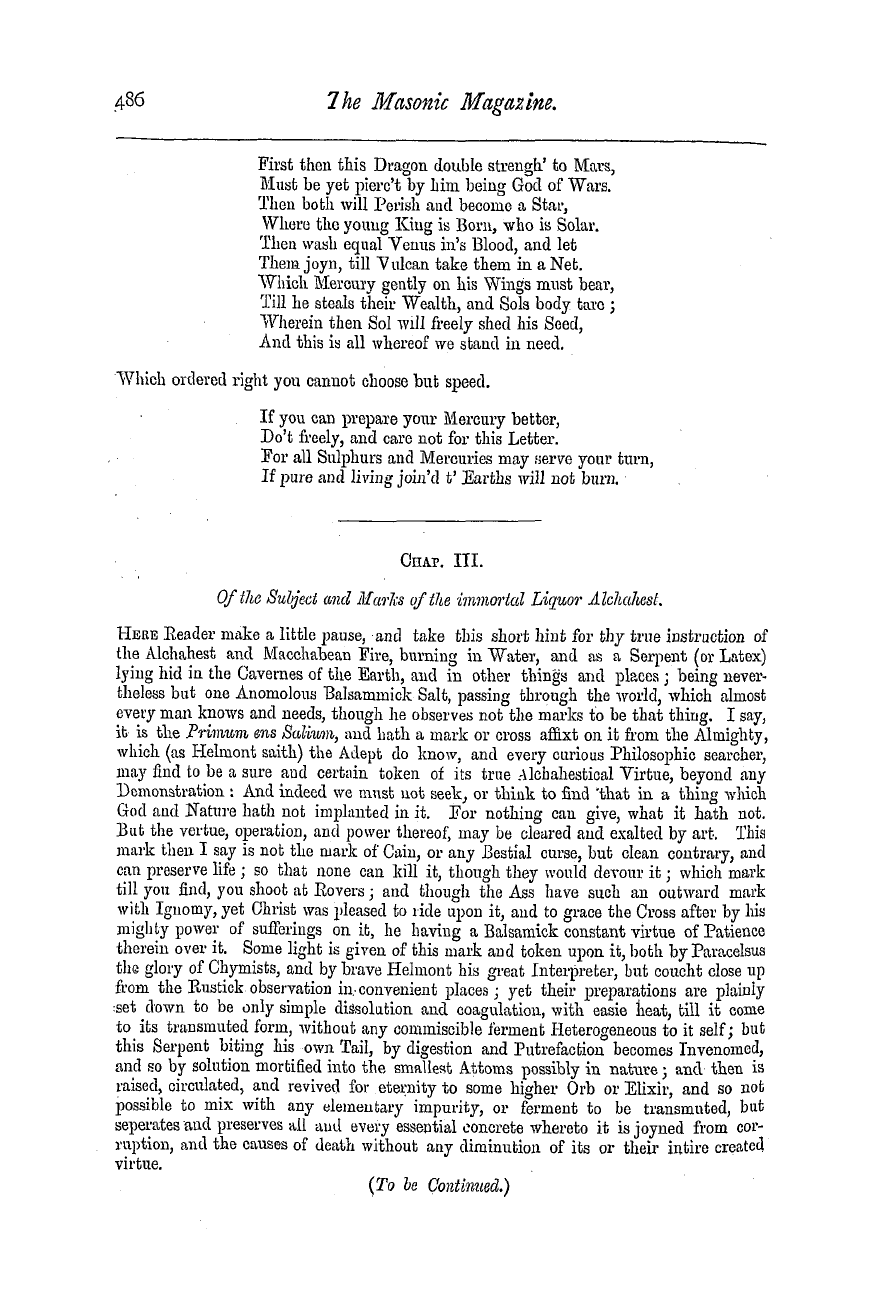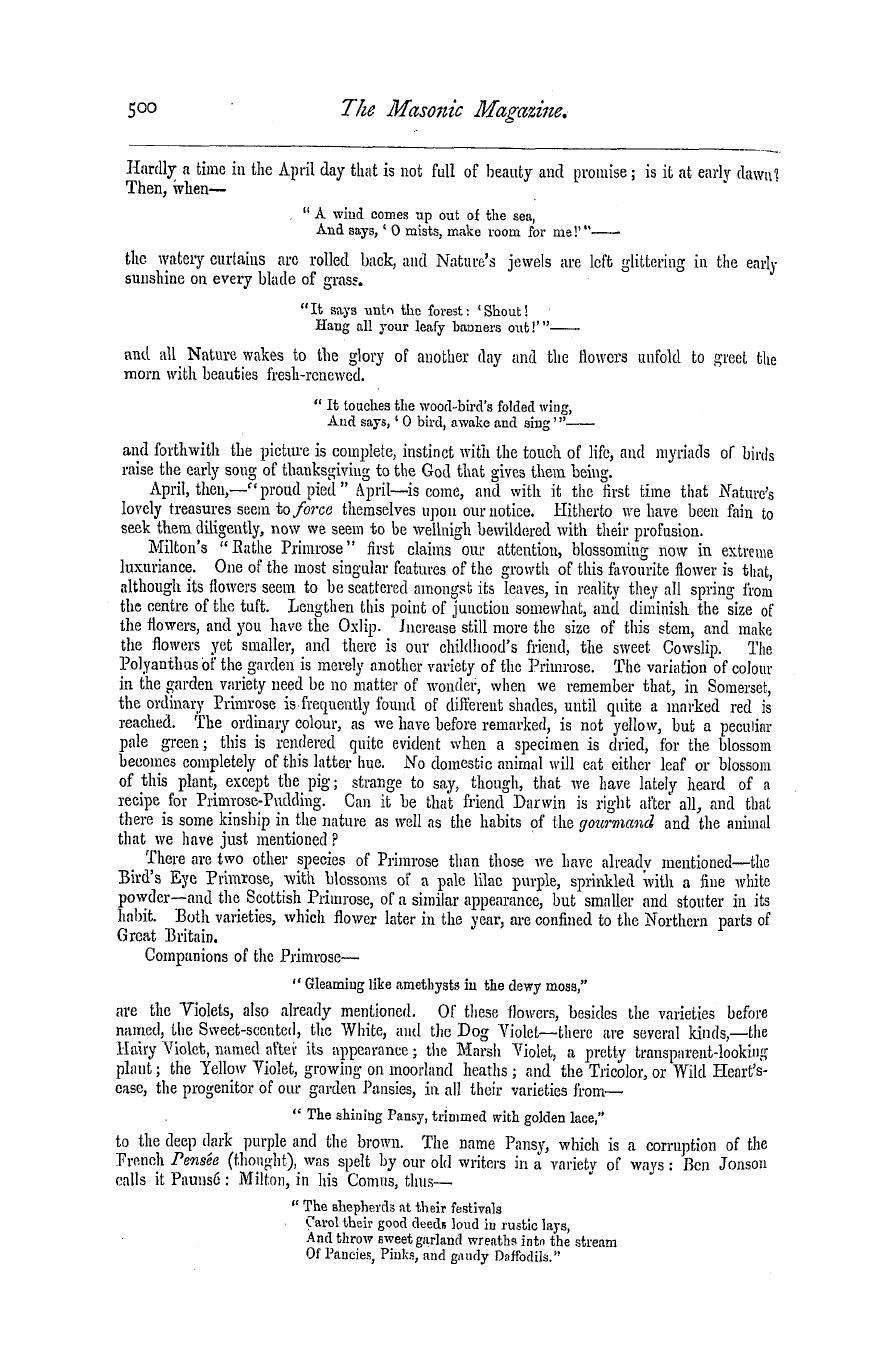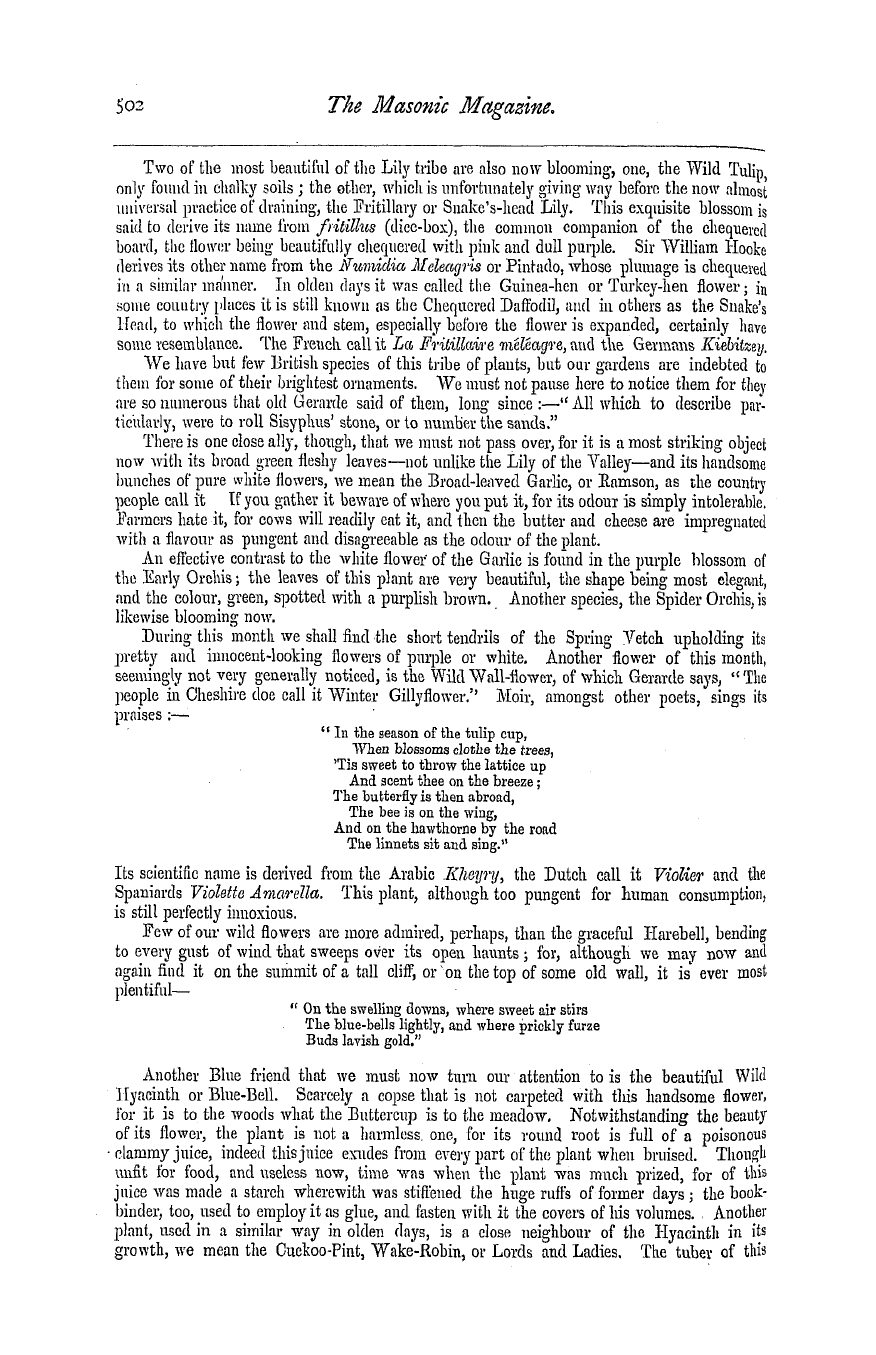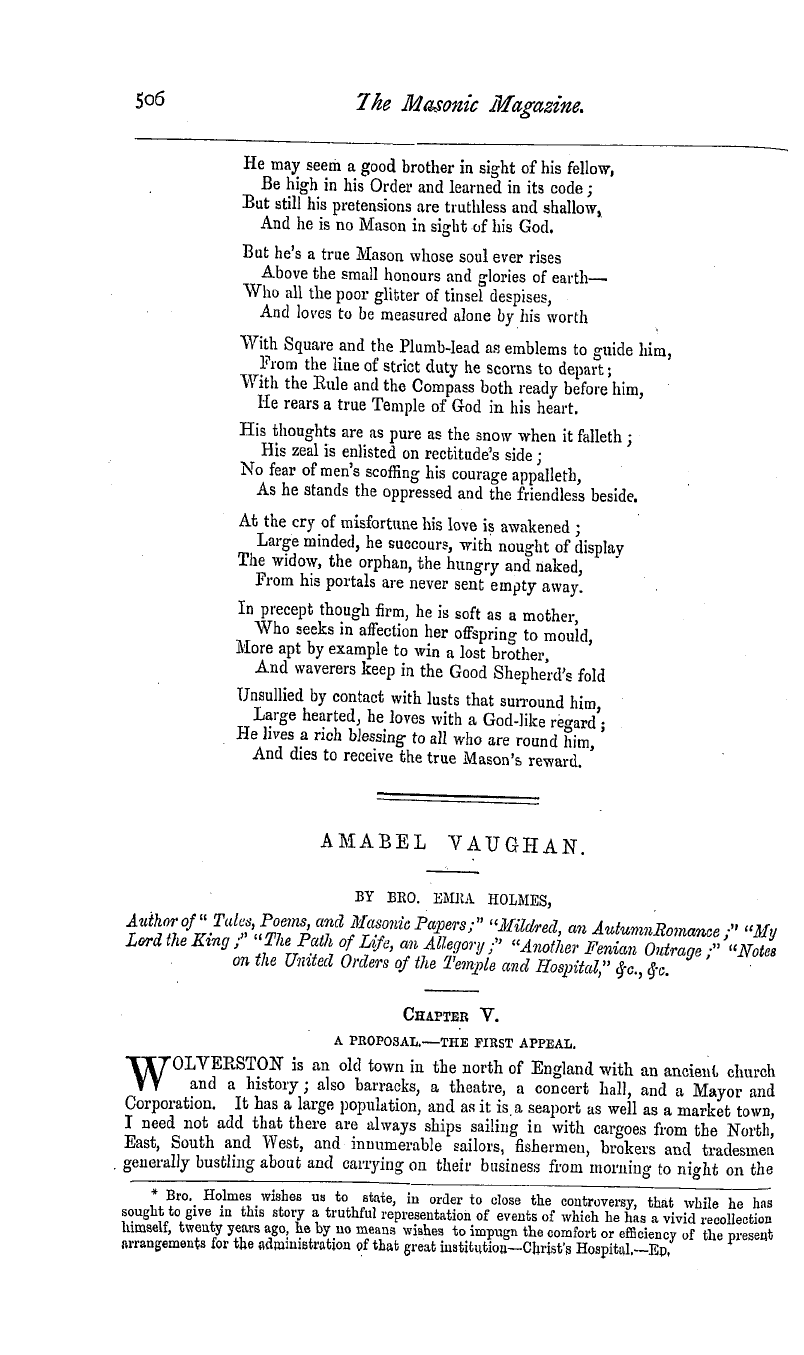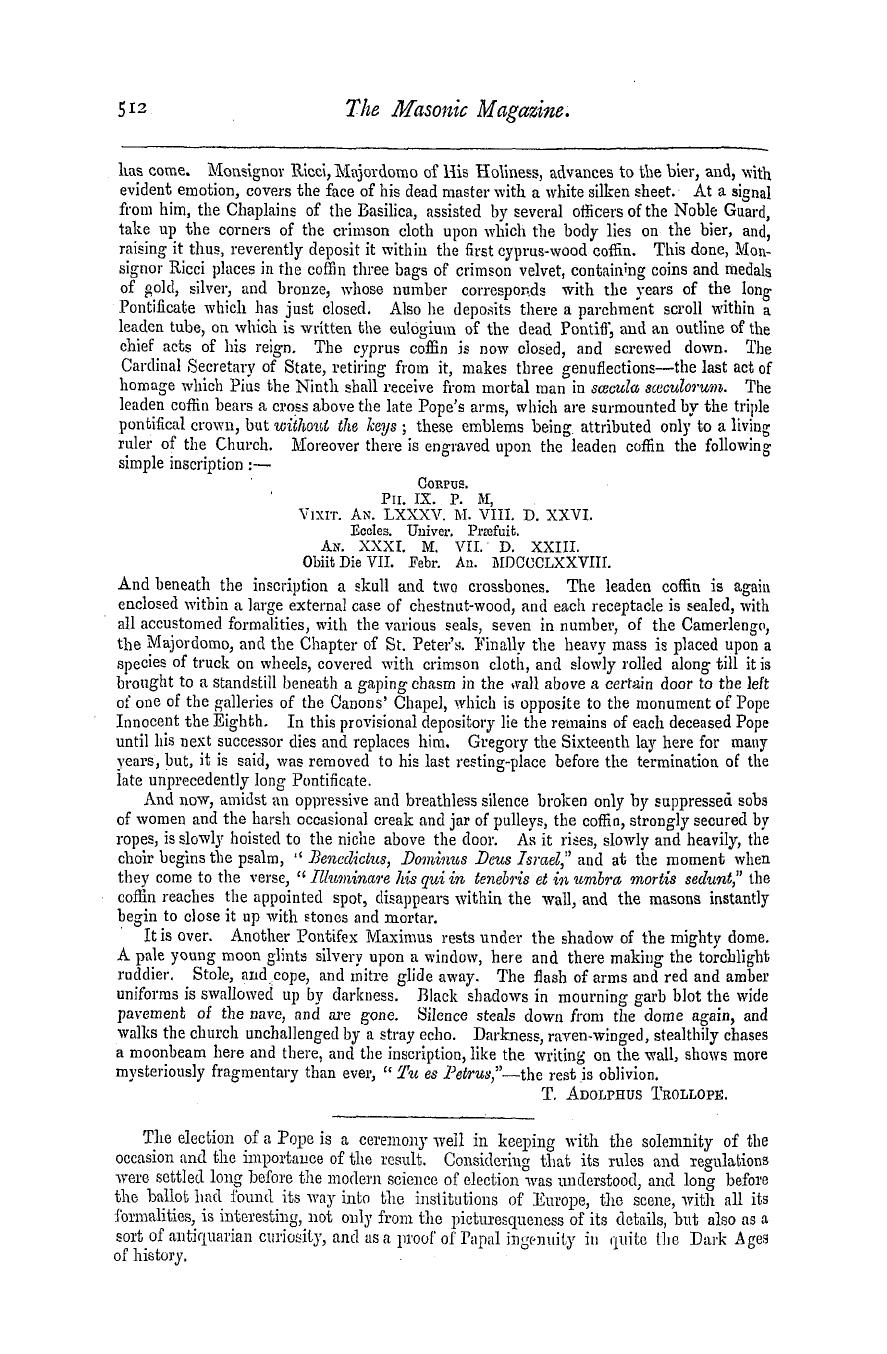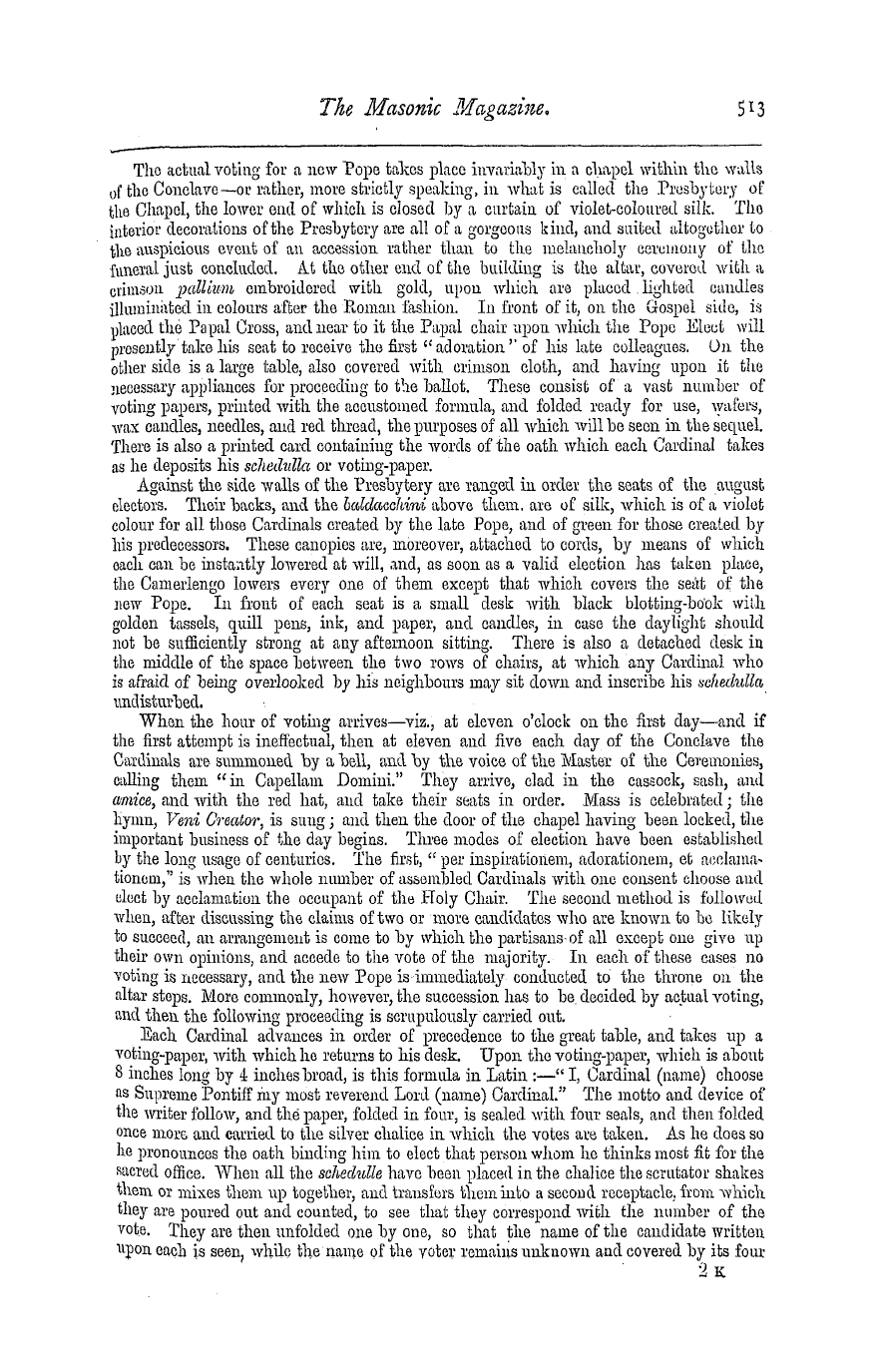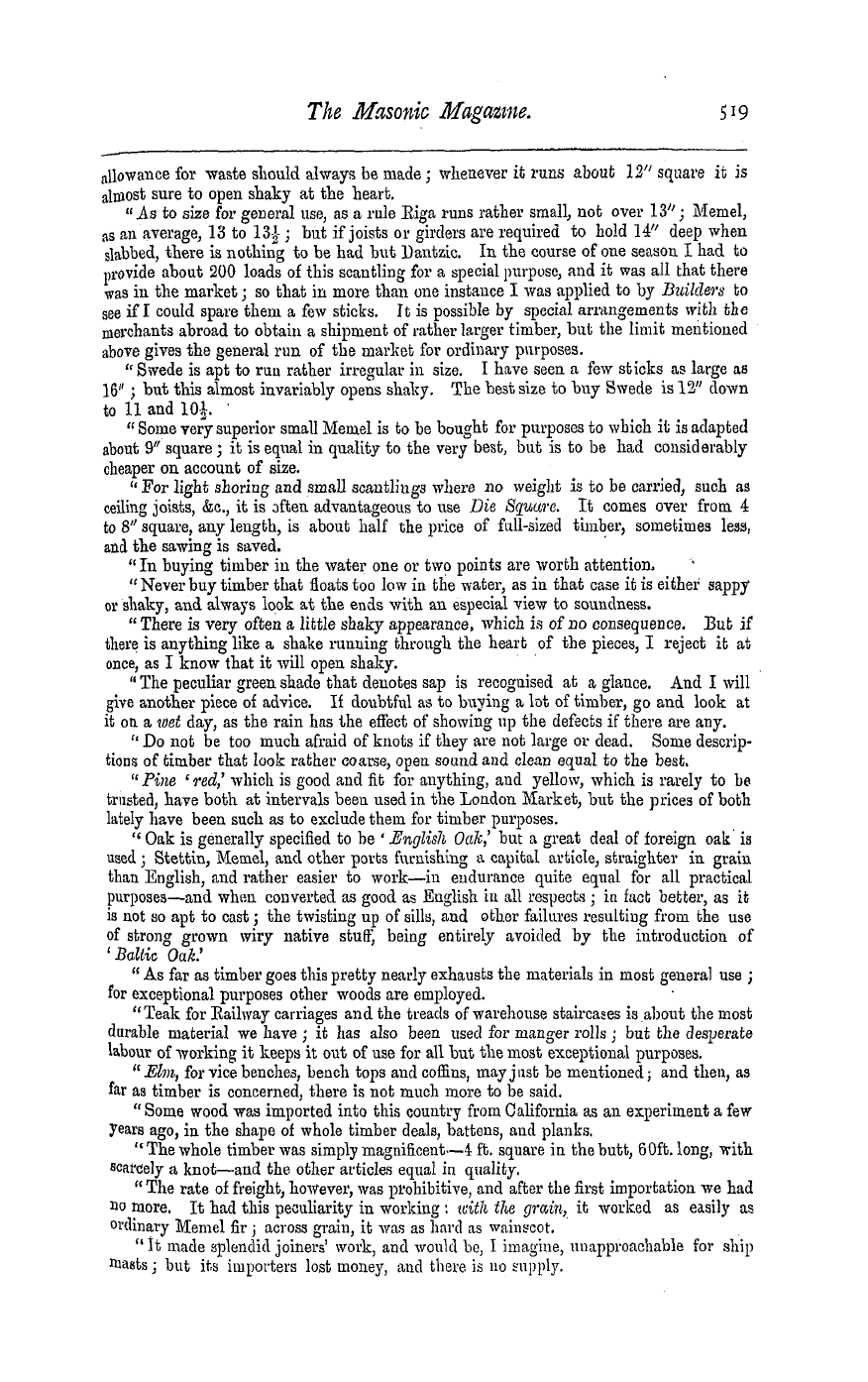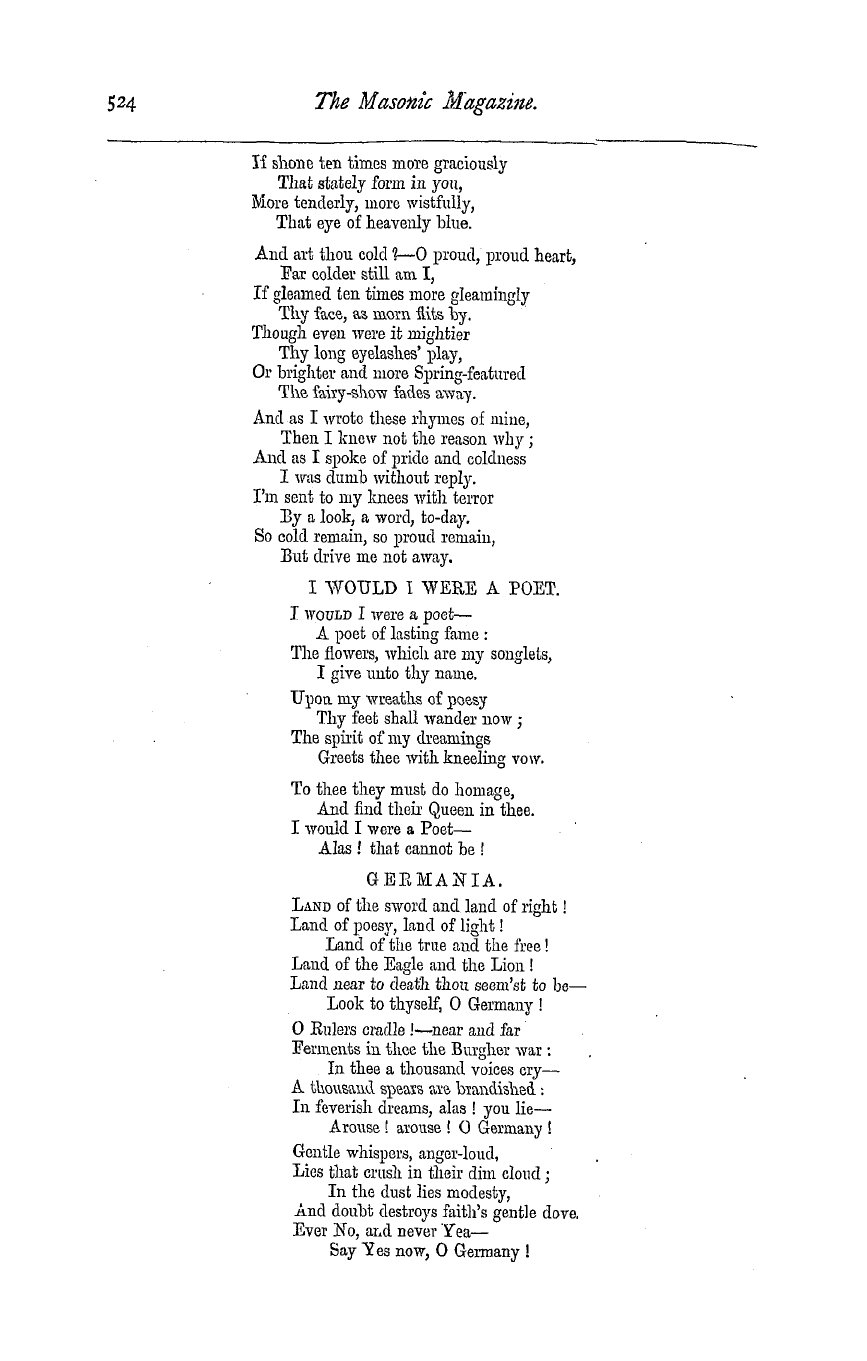-
Articles/Ads
Article THE WORK OF NATURE IN THE MONTHS. ← Page 5 of 6 →
Note: This text has been automatically extracted via Optical Character Recognition (OCR) software.
The Work Of Nature In The Months.
TAVO ol the most beautiful of the Lily tribe are also now blooming , one , the Wild Tuli p only found in chalky soils ; the other , which is unfortunately giving Avay before the noAV almost universal practice of draining , the Fritillary or Snake ' s-head Lily . This exquisite blossom is said to derive its name from fritillus ( dice-box ) , the common companion of the chequered hoard , the flower being beautifully chequered with pink ancl dull purple . Sir William Hooke derives its other name from the Numidia Meleagris or Pintado , Avhose plumage is chequered in a similar manner . In olden days it Avas called the Guinea-hen or Turkey-hen fioAver ; in
some country places it is still known as the Chequered Daffodil , and in others as the Snake ' s Head , to AA'hich the flower and stem , especially before the fioAver is expanded , certainly have some resemblance . The French call it La Fritillain mileagre , and the Germans Kiebitzey , We have but feAV British species of this tribe of plants , but our gardens are indebted to them for some of their brightest ornaments . We must not pause here to notice them for they are so numerous that old Gerarde said of them , long since : — " All AA'hich to describe particularly , Avere to roll Sisyphus' stone , or to number the sands . "
Ihere is one close ally , though , that Ave must not pass over , for it is a most striking object HOAV Avith its broad green fleshy leaves—not unlike the Lily of the Valley—and its handsome bunches of pure white flowers , AA'e mean the Broad-leaved Garlic , or Bamson , as the country people call it If you gather it beAvave of where you put it , for its odour is simply intolerable . Farmers hate it , for COAVS will readil y eat it , and then the butter and cheese are impregnated Avith a flavour as pungent ancl disagreeable as the odour of the plant . An effective contrast to the Avhite fioAver of the Garlic is found in the purple blossom of
the Early Orchis ; the leaves of this plant are very beautiful , the shape being most elegant , and the colour , green , spotted Avith a purplish brown . Another species , the Spider Orchis , is likewise blooming noAV . During this month Ave shall find the short tendrils of the Spring Vetch upholding its pretty ancl innocent-looking flowers of purple or white . Another flower of this month , seemingly not very generally noticed , is the WEd Wall-flower , of Avhich Gerarde says , " The people in Cheshire doe call it Winter Gill yflower . " Moir , amongst other poets , sings its praises : —
" In the season of the tulip cup , AVhen blossoms clothe the trees , 'Tis sweet to throw the lattice up And scent thee on the breeze ; The butterfly is then abroad , The bee is on the wing , And on the hawthorne by the road The linnets sit and sing . "
Its scientific name is derived from the Arabic . Kheyry , the Dutch call it Violier ancl the Spaniards Violette Amarella . This p lant , although too pungent for human consumption , is still perfectly innoxious . FCAV of our wild floAvers are more admired , perhaps , than the graceful Harebell , bending to every gust of Avind that sweeps over its open haunts ; for , although Ave may DOAV and again find it on the summit of a tall cliff , or on the top of some old wall , it is ever most
plentiful" On the swelling doAvns , where SAveet air stirs The blue-bells lightly , and Avhere prickly furze Buds lavish gold . " Another Blue friend that Ave must HOAV turn our attention to is the beautiful Wild Hyacinth or Blue-Bell . Scarcely a copse that is not carpeted with this handsome flower , for it is to the woods Avhat the Buttercup is to the meadow . NotAvithstanding the beauty
of its flower , the plant is not a harmless , one , for its round root is full of a poisonous clammy juice , indeed this juice exudes from every part of the plant when bruised . Though unfit for food , and useless now , time AA'as Avhen the plant was much prized , for of this juice Avas made a starch wherewith was stiffened the huge ruff ' s of former days ; the bookbinder , too , used to employ it as glue , and fasten with it the covers of Ids volumes . , Another plant , used in a similar way in olden clays , is a close neighbour of the Hyacinth in its growth , AVC mean the Cuckoo-Pint , Wake-Robin , or Lords ancl Ladies , The tuber of this
Note: This text has been automatically extracted via Optical Character Recognition (OCR) software.
The Work Of Nature In The Months.
TAVO ol the most beautiful of the Lily tribe are also now blooming , one , the Wild Tuli p only found in chalky soils ; the other , which is unfortunately giving Avay before the noAV almost universal practice of draining , the Fritillary or Snake ' s-head Lily . This exquisite blossom is said to derive its name from fritillus ( dice-box ) , the common companion of the chequered hoard , the flower being beautifully chequered with pink ancl dull purple . Sir William Hooke derives its other name from the Numidia Meleagris or Pintado , Avhose plumage is chequered in a similar manner . In olden days it Avas called the Guinea-hen or Turkey-hen fioAver ; in
some country places it is still known as the Chequered Daffodil , and in others as the Snake ' s Head , to AA'hich the flower and stem , especially before the fioAver is expanded , certainly have some resemblance . The French call it La Fritillain mileagre , and the Germans Kiebitzey , We have but feAV British species of this tribe of plants , but our gardens are indebted to them for some of their brightest ornaments . We must not pause here to notice them for they are so numerous that old Gerarde said of them , long since : — " All AA'hich to describe particularly , Avere to roll Sisyphus' stone , or to number the sands . "
Ihere is one close ally , though , that Ave must not pass over , for it is a most striking object HOAV Avith its broad green fleshy leaves—not unlike the Lily of the Valley—and its handsome bunches of pure white flowers , AA'e mean the Broad-leaved Garlic , or Bamson , as the country people call it If you gather it beAvave of where you put it , for its odour is simply intolerable . Farmers hate it , for COAVS will readil y eat it , and then the butter and cheese are impregnated Avith a flavour as pungent ancl disagreeable as the odour of the plant . An effective contrast to the Avhite fioAver of the Garlic is found in the purple blossom of
the Early Orchis ; the leaves of this plant are very beautiful , the shape being most elegant , and the colour , green , spotted Avith a purplish brown . Another species , the Spider Orchis , is likewise blooming noAV . During this month Ave shall find the short tendrils of the Spring Vetch upholding its pretty ancl innocent-looking flowers of purple or white . Another flower of this month , seemingly not very generally noticed , is the WEd Wall-flower , of Avhich Gerarde says , " The people in Cheshire doe call it Winter Gill yflower . " Moir , amongst other poets , sings its praises : —
" In the season of the tulip cup , AVhen blossoms clothe the trees , 'Tis sweet to throw the lattice up And scent thee on the breeze ; The butterfly is then abroad , The bee is on the wing , And on the hawthorne by the road The linnets sit and sing . "
Its scientific name is derived from the Arabic . Kheyry , the Dutch call it Violier ancl the Spaniards Violette Amarella . This p lant , although too pungent for human consumption , is still perfectly innoxious . FCAV of our wild floAvers are more admired , perhaps , than the graceful Harebell , bending to every gust of Avind that sweeps over its open haunts ; for , although Ave may DOAV and again find it on the summit of a tall cliff , or on the top of some old wall , it is ever most
plentiful" On the swelling doAvns , where SAveet air stirs The blue-bells lightly , and Avhere prickly furze Buds lavish gold . " Another Blue friend that Ave must HOAV turn our attention to is the beautiful Wild Hyacinth or Blue-Bell . Scarcely a copse that is not carpeted with this handsome flower , for it is to the woods Avhat the Buttercup is to the meadow . NotAvithstanding the beauty
of its flower , the plant is not a harmless , one , for its round root is full of a poisonous clammy juice , indeed this juice exudes from every part of the plant when bruised . Though unfit for food , and useless now , time AA'as Avhen the plant was much prized , for of this juice Avas made a starch wherewith was stiffened the huge ruff ' s of former days ; the bookbinder , too , used to employ it as glue , and fasten with it the covers of Ids volumes . , Another plant , used in a similar way in olden clays , is a close neighbour of the Hyacinth in its growth , AVC mean the Cuckoo-Pint , Wake-Robin , or Lords ancl Ladies , The tuber of this





